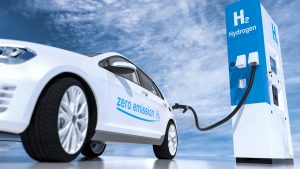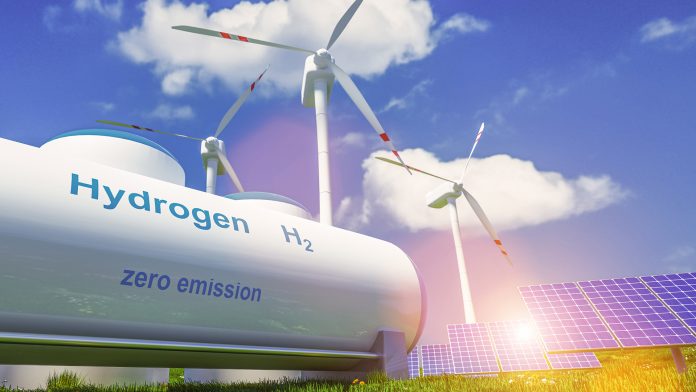Frank Wolak, President of the Fuel Cell and Hydrogen Energy Association, discusses the current hydrogen landscape in the US and hydrogen energy’s role in a zero-emission future.
Countries around the world are introducing robust climate policies to combat carbon emissions and help achieve 2050 net zero goals, pioneering green technologies and energy sources to ensure the sustainable future of our planet. One of the most promising candidates to facilitate our energy needs is hydrogen fuel cell technology, which has a vast array of applications, from powering zero-emission transport to providing a vital power source for household and industrial applications. Hydrogen fuel cells utilise the chemical energy of hydrogen to generate electricity, with the only by-products of the process being heat and water, resulting in no tailpipe emissions in the case of transport. However, despite representing one of the most effective decarbonisation methods, the hydrogen energy is still in its infancy and requires development to become a premier source of green energy.
To find out more about hydrogen fuel cell technology and the wider scope of hydrogen energy in the US, The Innovation Platform spoke to industry expert Frank Wolak of the Fuel Cell and Hydrogen Energy Association.
How does the Fuel Cell and Hydrogen Energy Association work to accelerate the US hydrogen market, and what are your current major focuses?
The Fuel Cell and Hydrogen Energy Association has been in existence in forms for over 30 years. We are the leading advocate for hydrogen fuel cell technology in the US, with nearly 100 members. We have been the only advocate for hydrogen fuel cells on a national level for many of those years, seeking to support policy and educate about the merits of hydrogen fuel cell technology.
Today, our mission has changed rapidly, along with the changes in hydrogen interest worldwide. The depth of our activities is broadening daily as more and more members have new interests and the marketplace expands. We are based in Washington, DC, so much of our focus is on national policy and ensuring that guidance from our government and policymakers aligns with what the industry seeks to advance. We are heavily focused on implementing major laws passed in the US last year, working very closely with industry and government to define the rules and regulations.
Our short-term activities involve boosting diversity within the industry and removing barriers to implementing laws. We aim to work with industry to define specific areas in which they want to grow, what kind of education we need, and what issues might appear on the horizon in coming years that we can start tackling today.
How would you describe the current landscape for hydrogen energy in the US?
We are transitioning from an existing industry that was predominantly an industrial gas business, producing 11 million metric tonnes of hydrogen, which is rapidly adjusting as new players look to produce hydrogen, introduce technologies, such as electrolysers storage, and look at applications. Our members are the industrial gas companies, producers, utilities, vehicle manufacturers, and all those who were trying to find the right place to expand. We are moving very quickly from an industrial gas mode to one where hydrogen will be a considerable energy resource in the US energy mix.
Is current infrastructure enough to support such a rapid acceleration of hydrogen development?
The infrastructure needed to support this growth is in its infancy, although the concepts of the infrastructure are very well established. For example, we already have safety codes, transport rules, tanker trucks, and steam methane reforming (SMR) facilities producing hydrogen. So, the idea that hydrogen needs to accelerate is not starting from ground zero. It is starting from a platform where there is already infrastructure, rules, companies who understand it, and engineers.
However, the infrastructure needed to introduce hydrogen as a more mainstream energy resource has yet to be developed. Those are the facilities that would produce hydrogen from large solar farms, introduce storage into the electricity grid, and build terminals that might be useful for ammonia export. That kind of infrastructure is still on the drawing board and that is part of the excitement of going from a plateau where we are starting as an industry and expanding into a more mainstream energy resource.
What are your projections for the direction of the US hydrogen market in the next five years?
Market participants that exist today, and future newcomers to the market, will find their own niche. In that sense, there will be those who want to produce hydrogen from solar or wind resources to develop local uses of hydrogen in markets with a demand. There will also be companies involved in the blue hydrogen area, with natural gas, that will be looking at the carbon separation and will start to determine whether those projects make sense where they exist.

You will also begin to see applications emerge. For example, industrial companies looking to apply hydrogen for steelmaking, cement, and petrochemicals will begin to evolve to what they need for a supply and determine what technology needs to be applied.
I think the next five years will see the initial positioning of where market entrants see their own place, and then investments will begin to be populated. It will all come together where there is more of a uniform delivery and production of hydrogen over those five years. The first steps will include companies and industries deciding where they want to place their investments and setting up their business policies and practices.
Currently, we are in the midst of a very important regulation adoption in the US, and we need to get it right. The regulations must be as broad as possible to allow for the industry’s rapid expansion. The industry is clearly motivated to be a decarbonising contributor, but we need to get started fast, and if we are going to be a mainstream contributor to decarbonisation, we have to be able to move rapidly without barriers or constraints to growth.
Frank Wolak
President and CEO
Fuel Cell & Hydrogen Energy Association
https://www.fchea.org/
https://www.linkedin.com/company/fuel-cell-and-hydrogen-energy-association/
Please note, this article will also appear in the thirteenth edition of our quarterly publication.









